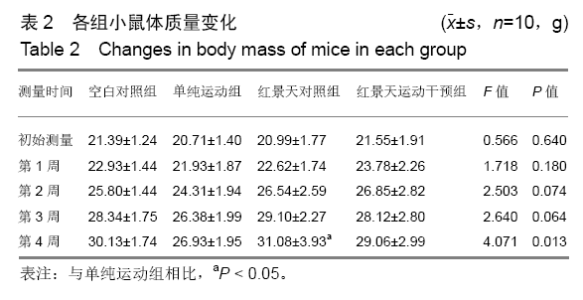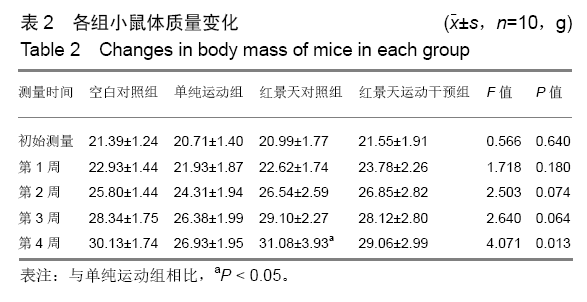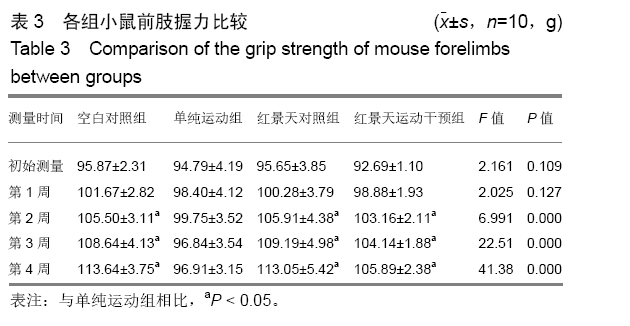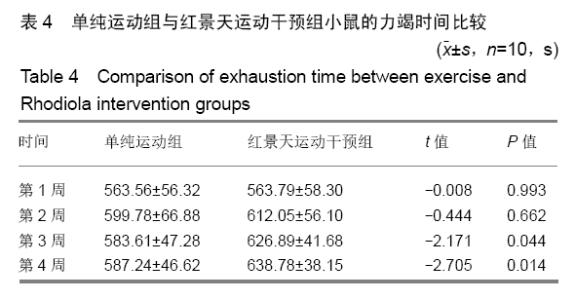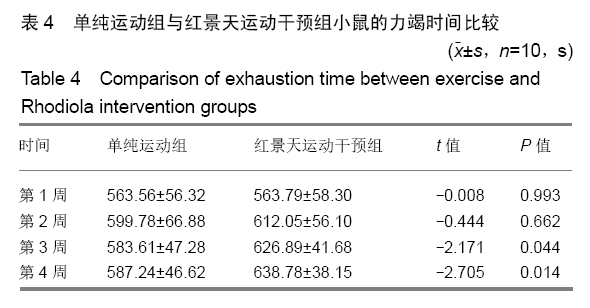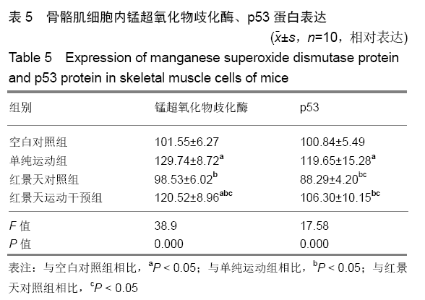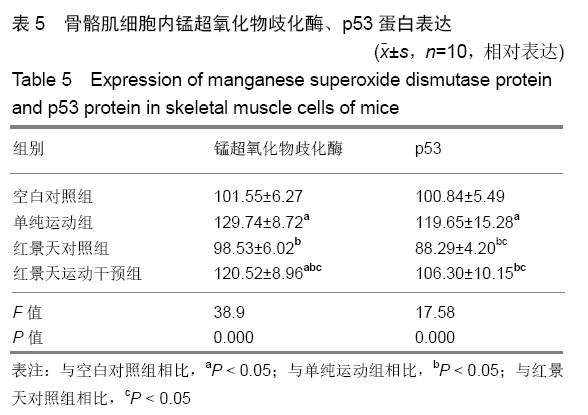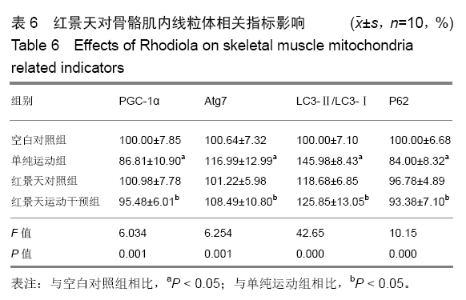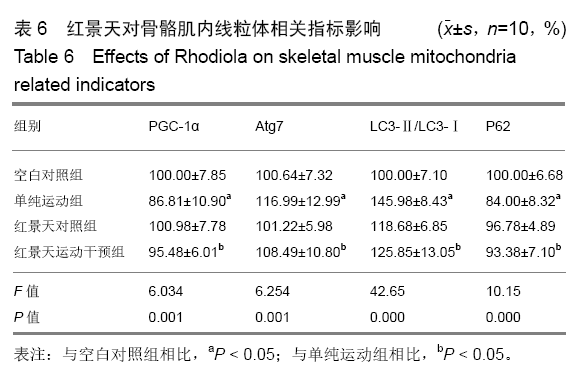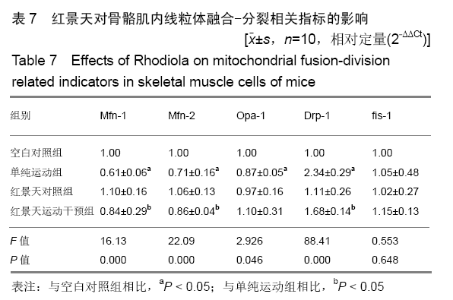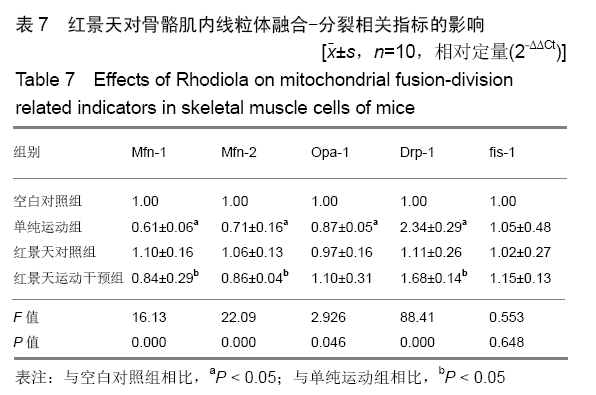[1] 余群,翁锡全,王丽平.骨骼肌减少症与运动训练对肌卫星细胞影响的研究现状及展望[J].中国组织工程研究,2016,20(15):2248-2254.
[2] 朱荣,马建设.间歇与持续有氧运动改善慢性心力衰竭大鼠骨骼肌糖原代谢研究[J].中国体育科技,2017,53(1):63-72.
[3] 邓文骞,王璐.缺氧预处理对老年大鼠运动性骨骼肌损伤的作用及机制[J].中国老年学杂志,2016,36(1):5-7.
[4] CHEN PB, YANG JS, PARK Y. Adaptations of Skeletal Muscle Mitochondria to Obesity, Exercise, and Polyunsaturated Fatty Acids. Lipids.2018; 53(3):271-278.
[5] ROCHA-RODRIGUES S, RODRÃGUEZ A, BECERRIL S, et al. Physical exercise remodels visceral adipose tissue and mitochondrial lipid metabolism in rats fed a high-fat diet. Clin Exp Pharmacol Physiol. 2017;44(3): 386-394.
[6] DISTEFANO G, STANDLEY RA, ZHANG X, et al.Physical activity unveils the relationship between mitochondrial energetics, muscle quality, and physical function in older adults.J Cachexia Sarcopenia Muscle. 2018 Apr;9(2):279-294.
[7] FIX DK, HARDEE JP, GAO S, et al.The Role of gp130 in Basal and Exercise Trained Skeletal Muscle Mitochondrial Quality Control.J Appl Physio.2018;124(6):1456-1470.
[8] 张俊彪,郭军霞.红景天苷对人心肌细胞缺氧损伤的保护作用及可能机制[J].中国现代医学杂志,2017,27(8):21-26.
[9] 张华,周光群.红景天甙减轻大鼠酒精性肝损伤[J].中国病理生理杂志, 2018,34(7):1311-1316.
[10] XU ZW, CHEN X, JIN XH, et al. SILAC-based proteomic analysis reveals that salidroside antagonizes cobalt chloride-induced hypoxic effects by restoring the tricarboxylic acid cycle in cardiomyocytes. J Proteomics. 2016;130:211.
[11] RUEI-ER W,WEN-CHING H,CHEN-CHUNG L,et al.Resveratrol protects against physical fatigue and improves exercise performance in mice.Molecules.2013;18(4):4689-4702.
[12] PORSOLT RD,BERTIN A,JALFRE M.Behavioral despair in mice: a primary screening test for antidepressants. Arch Int Pharmacodyn. 1977;229(2):327-336.
[13] CHEN Y, HILL HZ, LANGE G, et al. Salivary Mitochondrial DNA Copy Number Is Associated With Exercise Ventilatory Efficiency. J Strength Cond Res. 2017;31(7):2000-2004.
[14] CHOWDHURY AR,LONG A, FUCHS S Y, et al. Mitochondrial stress-induced p53 attenuates HIF-1α activity by physical association and enhanced ubiquitination. Oncogene.2017;36(3): 397-409.
[15] POTTECHER J, ADAMOPOULOS C, LEJAY A, et al. Diabetes Worsens Skeletal Muscle Mitochondrial Function, Oxidative Stress, and Apoptosis After Lower-Limb Ischemia-Reperfusion: Implication of the RISK and SAFE Pathways?.Front Physiol. 2018;9:579.
[16] CRANE JD, ABADI A, HETTINGA B P, et al. Elevated Mitochondrial Oxidative Stress Impairs Metabolic Adaptations to Exercise in Skeletal Muscle.Plos One.2013;8(12):e81879.
[17] ZHU Y, ZHANG YJ, LIU WW, et al. Salidroside Suppresses HUVECs Cell Injury Induced by Oxidative Stress through Activating the Nrf2 Signaling Pathway. Molecules.2016;21(8).
[18] HUANG L, LYU J, LIU Q P, et al. MnSOD Val16Ala polymorphism associated with retinopathy risk in diabetes: a PRISMA-compliant Meta-analysis of case-control studies.Int J Ophthalmol. 2017;10(4): 639-645.
[19] GANINI D, SANTOS JH, BONINI MG, et al. Switch of Mitochondrial Superoxide Dismutase into a Prooxidant Peroxidase in Manganese- Deficient Cells and Mice.Cell Chem Biol.2018;25(4):413-425.e6.
[20] AZADMANESH J, BORGSTAHL G.A Review of the Catalytic Mechanism of Human Manganese Superoxide Dismutase. Antioxidants (Basel). 2018;7(2). pii: E25.
[21] KIM MP, LOZANO G. Mutant p53 partners in crime. Cell Death Differ. 2018;25(1):161-168.
[22] PFEIFER GP, DENISSENKO MF.Formation and repair of DNA lesions in the p53 gene: relation to cancer mutations?.Environ Mol Mutagen. 2015;31(3):197-205.
[23] ALKURAISHY HM, ALGAREEB AI, ALBUHADILLY AK.p53 Gene (NY-CO-13) Levels in Patients with Chronic Myeloid Leukemia: The Role of Imatinib and Nilotinib.Diseases.2018;6(1):E13.
[24] SATO H, HIRAKI M, NAMBA T, et al. Andrographolide induces degradation of mutant p53 via activation of Hsp70.Int J Oncol.2018; 52(2)761-763.
[25] MISSIROLI S, BONORA M, PATERGNANI S, et al. PML at Mitochondria- Associated Membranes Is Critical for the Repression of Autophagy and Cancer Development.Cell Reports.2016;16(9): 2415-2427.
[26] TAO H, QIAN P, LU J, et al. Autophagy inhibition enhances radiosensitivity of Eca-109 cells via the mitochondrial apoptosis pathway.Inter J Oncol.2018;52(6):1853-1862.
[27] 应小卫,李灵晓,章永强,等.多巴丝肼片对帕金森模型小鼠中脑线粒体自噬相关基因PINK1表达的影响[J]. 中国临床药理学杂志, 2018,34(14): 80-82.
[28] 伊利夏提•肖开提,张汉霆,O′Donnell JM,等.线粒体动态相关蛋白1在阿尔茨海默病线粒体动态学中的作用机制研究进展(英文)[J].中国药理学与毒理学杂志,2016,30(6):667-673.
[29] SZABO A, SUMEGI K, FEKETE K, et al. Activation of mitochondrial fusion provides a new treatment for mitochondria-related diseases.Bio Pharmacol.2018;150(11):86-96.
[30] 俞瑾,郑宏.调控线粒体动力学分子机制在心肌保护中的研究进展[J].中国科技论文,2016,11(6):645-650.
|
